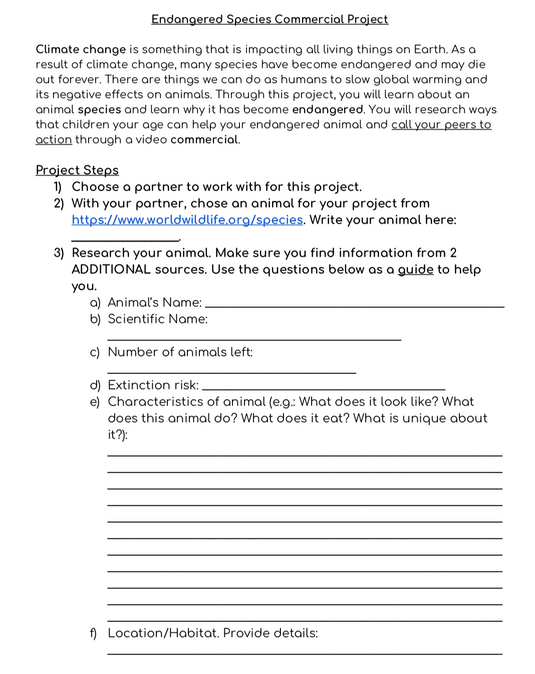
Name
M.A. Curriculum and Instruction '19
Preliminary Multiple Subject Teaching Credential '19
B.A. Integrated Educational Studies '18
Chapman University
Project-Based Learning Science
I teach the Next Generation Science Standards (NGSS) through Project-Based Learning. Students complete projects individually, in pairs, or in groups to learn by doing and experiencing the standards in a hands-on manner. Technology is integrated within projects and lessons to substitute, augment, modify, and redefine tasks. I also frame projects in a real-world contexts, often through a participatory action approach. This engages students to learn, research, and make positive change in their school, surrounding communities, and the world.
Biomes
Students learned about biomes during distance learning. They chose a biome to research further and report on. Students presented their research in writing and a visual representation of the biome.
Teacher's Biome Lesson





Body Unit

This worksheet was part of a lesson on the circulatory system. After completing the worksheet as a class, students were taught how to take their own pulse at different pulse points throughout their bodies. Students took their resting pulse and active pulse during P.E. and had a class discussion comparing the two pulses taken.


This project focused on the bones in the human body. After going over each bone as part of a whole-class lesson, students were tasked with labeling and connecting the bones. Students created this project in time for Halloween and took home their creations to use as festive decorations.
Endangered Species unit
I created an interdisciplinary unit that addresses science, technology, English Language Arts, and Writing standards. The thumbnail to the left depicts the instruction pages, rubric, and formative progress checkpoints to help pace students.
Students worked with a partner to research an endangered species and then write about their findings. Then students film and edit a commercial/P.S.A. to report their research and to call people to action by providing ways they can help the animal.
This interdisciplinary unit also serves as a Youth Participatory Action Research Project (YPAR) because it challenges students to go out and make the change in their communities to help the animals they studied.





